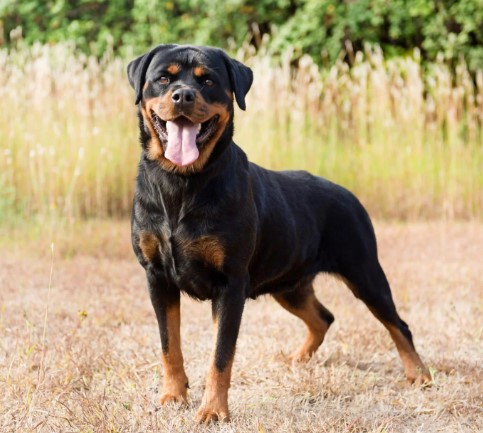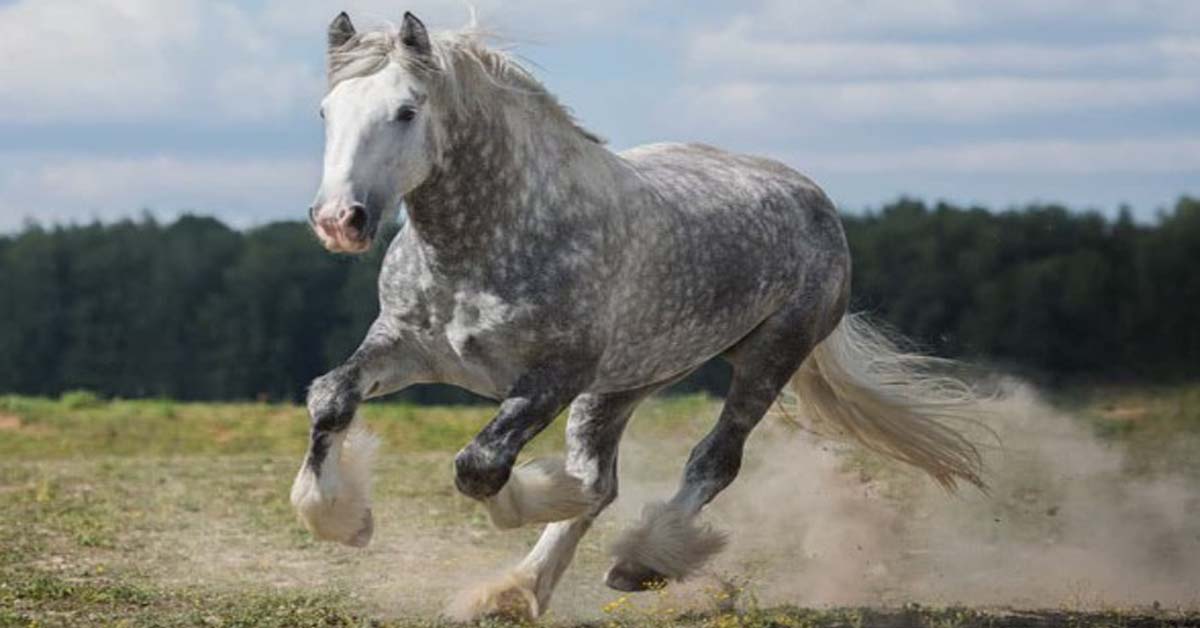The Arabian Horse stands as the oldest recorded equine breed, with documented history and depictions spanning over 2,000 years, placing its origins in the Middle East region1,2,3.
Paleogenomic evidence supports the influence of ancient Persian ancestry in the early development of the modern European horse breed around 1100-1300 YA4. The desert horse’s expansion coincided with the rise of nomadic Bedouin tribes, who esteemed these horses as cultural symbols, sources of wealth, and military assets.
Despite being outnumbered by the American Quarter Horse, the Arabian breed remains the most widespread globally5, boasting pedigree registries in at least 82 countries.
The contemporary Arabian horse exhibits a distinct conformational phenotype, featuring a dish-shaped facial profile, wide-set eyes, an arched neck, and a high tail6. However, historical photographs from the late 1800s and early 1900s reveal less pronounced facial traits and lower tail carriage2, suggesting strong selection by modern breeders, particularly in lines used for non-riding show competitions.
Renowned for heat tolerance and athletic endurance, Arabians excel in long-distance races, carrying riders over distances up to 160 km in winning times of 8 hours7. Genetic analysis has shown that the predisposition to endurance competition is a multigenic trait in Arabian horses.
Despite centuries of exportation, Arabian horse populations outside their ancestral homeland exhibit limited genetic diversity due to fewer founder animals8. This, combined with the selective breeding for certain traits, has heightened the risk of autosomal recessive inherited diseases in Arabians9,10.
Contrary to exported populations, studies indicate higher genetic diversity in Arabian horses in the Middle East compared to their global progeny11,12,13. Despite the breed’s ancient roots, molecular studies using mitochondrial DNA have raised questions about the accuracy of traditional Arabian horse maternal ancestry transmitted through oral history14,15,16,17.
Arabian horses have long been acknowledged for enhancing other horse breeds, notably evident in the Thoroughbred pedigree, maintained as a stud book since 179119. Pedigree-based analyses revealed the substantial contribution of Arabian stallions, such as the Godolphin Arabian, Darley Arabian, and Byerley Turk, to the modern Thoroughbred gene pool20.
However, recent Y chromosome haplotype analysis challenges the perceived role of the Arabian as the Thoroughbred breed founder, indicating the origin of the “Darley Arabian” Y haplotype from the Turkoman horse21.
This study employs equine single nucleotide polymorphism (SNP) arrays and whole-genome re-sequencing for a comprehensive genome-wide analysis of the Arabian horse’s genetic diversity, population structure, and origins. Additionally, the study explores genomic regions showing signals of selective action that may be crucial for the breed’s distinctive physical traits.
- Weight: 800 to 1,000 pounds
- Height: 14 hands (56 inches) to 16 hands (64 inches)
- Body Type: Lithe, compact body; small, wedge-shaped head; dished facial profile, long, arched neck
- Best For Experienced owners and riders
- Life Expectancy: 25 – 30 years
- Origin: Arabian peninsula
- Colors: Bay, chestnut, black, gray
Arabian Horse Breed characteristics
Arabian horses are characterized by their clean, wedge-shaped heads, broad foreheads, large eyes, expansive nostrils, and petite muzzles. The majority exhibit a distinctive concave or “dished” profile, a notable feature. Many also display a slight bulge between the eyes known as a jibah, identified by the Bedouin, enhancing sinus capacity, believed to be advantageous in the horse’s native arid desert habitat. Another hallmark is the arched neck, featuring a well-set windpipe on a clean, pure throat.
Referred to as Mitba or Mitbeh by the Bedouins, this combination of pole and throttle ideally provides a long neck, facilitating bridle flexibility and accommodating the windpipe. Additionally, Arabians typically possess a relatively long, level croup or hindquarter top and naturally carry their tails high. The USEF breed standard mandates solid bones and correct equine conformation for Arabians, emphasizing well-angulated hips and well-set shoulders in well-bred individuals.
Variations exist within the breed, with some having wider, powerfully muscled hindquarters suited for quick bursts like reining, and others featuring longer, leaner muscles ideal for extended flatwork such as endurance riding. Most Arabians have a compact body with a short back, dense, strong bones, and robust hoof walls. Renowned for their endurance, well-bred Arabians demonstrate superior strength and stamina in endurance riding competitions, particularly excelling in international FEI-sponsored events.

History Of Arabian Horse
The historical and cultural development of nations is intricately woven into the essence of the Arabian horse, a breed that has exerted a profound influence on nearly every other equine breed existing today. As one of the oldest human-developed horse breeds globally, Arabians have consistently showcased their superiority.
Origins of these captivating horses trace back to the Arabian Peninsula, where the resourceful Bedouins, renowned for their knowledge of camels a millennium ago, played a pivotal role in creating and domesticating this remarkable breed. Fueled by a warm climate and rich cultural traditions, the Bedouins expertly bred Arabian horses, emphasizing traits like endurance, intelligence, speed, and robust constitution—qualities ideal for war.
For centuries, the Bedouin meticulously documented the lineage of each horse through oral tradition, designating pure-blood horses as Asil and strictly prohibiting crossbreeding with non-Asil counterparts. The Bedouins recognized the strategic advantage of stealth in their raids, favoring mares over stallions for their quiet and unobtrusive movements.
As time progressed, the Bedouin developed various sub-types or strains of the Arabian horse, each characterized by unique attributes traceable through the maternal line. The Arabian Horse Association identifies five primary strains: Abayan, Hadban, Hamdani, Keheilan, and Seglawi. This commitment to nobility, purity, and specific strains reflects the Bedouin’s dedication to preserving the essence of the Arabian horse.
While interbreeding is not universally forbidden, some breeds adhere to strict guidelines. The Bedouins considered the purity of the bloodline paramount, and they adhered to the belief of telegony. According to this belief, if an Asil mare were to breed with an impure mare, all subsequent generations would carry impure bloodlines.
Over time, Arabian horses have been integrated by horse breeders worldwide to enhance and refine various modern breeds. The Arabian horse breed has undergone dynamic evolution, contributing to its global acclaim for breed improvement and success.
Appearance
The Arabian breed is characterized by its compact and relatively small build, featuring a petite head, prominent eyes, broad nostrils, a distinct wither, and a short back. Notably, it possesses 23 vertebrae, in contrast to the usual 24 found in other horse species.
Temperament
Arabian horses have shared a long history of close companionship with humans in desert environments for centuries. These prized war mares were often kept in the owner’s tent for shelter and protection against theft, remaining close to family life, including children.
The good temperament of Arabians today is a result of selective breeding, allowing only naturally good-tempered horses to reproduce. This has led to a unique disposition, making Arabians one of the few breeds where the United States Equestrian Federation permits children to show stallions in specific show ring classes limited to riders under 18 years old.
Despite their spirited nature, Arabians fall under the category of “warm-blooded” breeds, which includes other purebred, energetic horses bred for speed, such as the Akhal-Teke, Barb, and Thoroughbred. Their sensitivity and intelligence facilitate quick learning and effective communication with riders. However, this intelligence also means they can pick up both good and bad habits rapidly.
Arabians do not tolerate unfair or abusive training practices, and their cooperative nature is balanced by a sensitivity that requires careful handling. While mistreatment may make them nervous or anxious, severe spoiling or extreme abuse is necessary for them to become truly vicious.
On the flip side, some myths romantically depict Arabian horses with near-divine characteristics, contributing to their mystique and allure.
Personality
Negative perceptions of the Arabian horse breed can arise among both equine enthusiasts and casual horse lovers, primarily due to misconceptions about their being naturally “spastic” or “spooky.” However, contrary to these stereotypes, most Arabians exhibit an extremely friendly demeanor and are often likened to having a puppy personality.
Arabians, known for their affectionate nature, delight in forming strong bonds with humans. Their gentle temperament makes them excellent family horses, especially when interacting with children. Additionally, their naturally long lifespan positions them as ideal family pets, allowing them to grow alongside the family’s children.
Health
Arabians are susceptible to various genetic disorders, ranging from treatable to fatal, including:
- Severe combined immunodeficiency: A condition where a foal is born without an immune system, often leading to rapid death from infections.
- Lavender Fall Syndrome: A disease-causing multiple neurological issues in foals, typically resulting in fatality.
- Cerebellar abiotrophy: A frequently fatal neurological disorder impacting balance and coordination in foals.
In terms of behavior, Arabians typically exhibit friendliness towards humans. However, their intelligence and sensitivity make them prone to developing undesirable habits if not handled properly. While they may resist improper training, they generally cooperate well with experienced riders.

Care
Owning Arabian horses is a special experience given their status as one of the oldest horse breeds. These intelligent equines boast unique appearances, and ensuring their well-being is crucial.
Maintaining your Arabian horse’s health and happiness involves providing suitable shelter, ensuring proper nutrition, and addressing basic mane, coat, and hoof care needs. By attending to these aspects, you contribute to the overall well-being of your cherished Arabian horse.
Best Food For Arabian Hors
Similar to many other horse breeds, Arabians consume a diet consisting of fresh grass, high-quality hay, grain, and supplemental fruits and vegetables. Due to their desert ancestry, Arabians might require slightly less food than breeds of similar size to sustain a healthy weight, reflecting their adaptation to an environment with limited food resources.
Feeding
Provide your Arabian horse with 1 to 1.5 percent of its body weight in daily feed, with approximately 80 to 90 percent of its diet consisting of forage. For foraging, non-irrigated pastures and grass hay are suitable for Arabians. Additionally, you can introduce grains like barley, corn, and oats to supplement their diet.
Utilize fencing to divide the pasture into multiple one-acre sections, ensuring better pasture quality. Allow your horse to graze one section at a time, moving on once the grass and hay are consumed. Rotating your horse through sections helps promote grass regrowth.
If your land is limited to one acre, divide it into two parts. Shift your horse to a different section once it has consumed around 3 inches (7.6 cm) of hay, allowing the grazed section to recover.
Maintain a ratio of one or two horses per acre to prevent overgrazing and promote the health of the pasture.
Grooming
In professional horse care, grooming is a meticulous routine performed twice daily, both before and after the horse’s exercise. The trainers I worked with followed a specific method:
- Vigorously comb the horse’s coat.
- Apply a thin layer of moisturizing spray over the entire coat, mane, and tail feathers.
- Brush the body using a soft brush to remove loose hair, incorporating the moisturizing spray.
- Carefully comb the mane and tail feathers.
- Address each leg, clipping any long whiskers or bridlepaths.
This grooming process is completed before attaching any tack or protective gear. It is repeated after the horse has been worked and adequately cooled down. In cases of excess heat and sweat during the workout, the horse undergoes rinsing and sponging with a specialized oil and liniment mixture.
An important aspect is that a properly groomed horse post-riding should exhibit no saddle marks, ensuring a pristine appearance. At the university where I studied, all 157 horses in the equestrian program consistently displayed this level of grooming excellence. Any lingering traces of sweat prompt a recall for additional grooming, adhering to the standard of thorough horse care.
In a professional setting, horses typically have their tails docked and re-docked before shows or every two months. For those with long manes, braiding is a common practice to prevent wind knots and tangles. Equine professionals also ensure regular foot care, maintaining proper shoeing for the horse’s overall well-being.
Training
In the arduous training process in the Middle Eastern deserts, Arabian horses undergo rigorous instruction to achieve impeccable obedience to their masters. A crucial test of this obedience involves depriving the horses of water for several days, followed by releasing them near a water source.
As the horses approach the water, their thirst intensifies, and they eagerly drink. At this moment, the trainer blows a whistle, signaling a critical command. If the horses have truly internalized their training and learned obedience, they promptly turn around and return to the trainer. In response, the trainer generously provides them with the much-needed water they crave.
The trainer, intimately familiar with the needs of his horses, ensures they do not succumb to thirst. This training analogy draws a parallel to our relationship with God – He understands our needs and desires to provide for us. However, our part is to trust Him and obediently follow His guidance.
Exercise
Regular exercise is crucial for horses, considering their nature as grazing athletes. When you own a horse, it’s vital to recognize that exercise plays a central role in their care. Confining horses in yards or stables without providing ample opportunities for movement is not acceptable.
Horses that graze with fellow equines in a herd tend to engage in natural exercise, especially when the paddock offers rich pasture. The movement of the horses is driven by the need to explore and discover new plants in the pasture.
For horses in yards or stables, it’s essential to turn them out daily, either onto pasture, preferably with companions, or over a spacious area, again preferably with other horses. This not only ensures physical activity but also allows for social interaction among the horses. Horses turned out alone, even in well-grassed pastures, often tend to stand rather than graze, emphasizing the importance of social engagement for their overall well-being.
Arabian Horse For Sale || Adoption Center
See More Horse Breeds For Further Research
FAQs
What makes the Arabian horse so distinctive?
The Arabian horse, recognized as the oldest refined breed, stands out for its exceptional attributes, including speed, endurance, beauty, intelligence, and docility. Though shrouded in legend, this breed’s origins trace back to 7th-century Arabia.
What is the typical cost of an Arabian horse? || Arabian horse price
On average, an Arabian horse is priced between $5,000 and $30,000. However, top-tier show horses and stallions may command prices ranging from $80,000 to $150,000. Various factors, such as age, lineage, training, and gender, contribute to the horse’s valuation.
What is the primary strength of the Arabian horse?
Arabians are distinguished by sturdy bones, robust hooves, and exceptional endurance. Their prowess in endurance riding underscores the fact that well-bred Arabians exhibit strength, resilience, and superior endurance.
How fast can Arabian horses run?
Renowned for both elegance and athleticism, Arabian horses excel in endurance and can achieve remarkable speeds. The fastest recorded gallop reaches approximately 65 km/hour, with an average speed of 55 km/hour.
Is training Arabian horses challenging?
Training Arabian horses requires intelligence and a nuanced approach due to their sensitivity and warm disposition. While some may find them slower to learn in comparison to certain breeds like quarter horses, patient and intelligent handling is crucial, especially in disciplines like reining.












3 thoughts on “Arabian Horse Breed: World Best Special Description For You…”